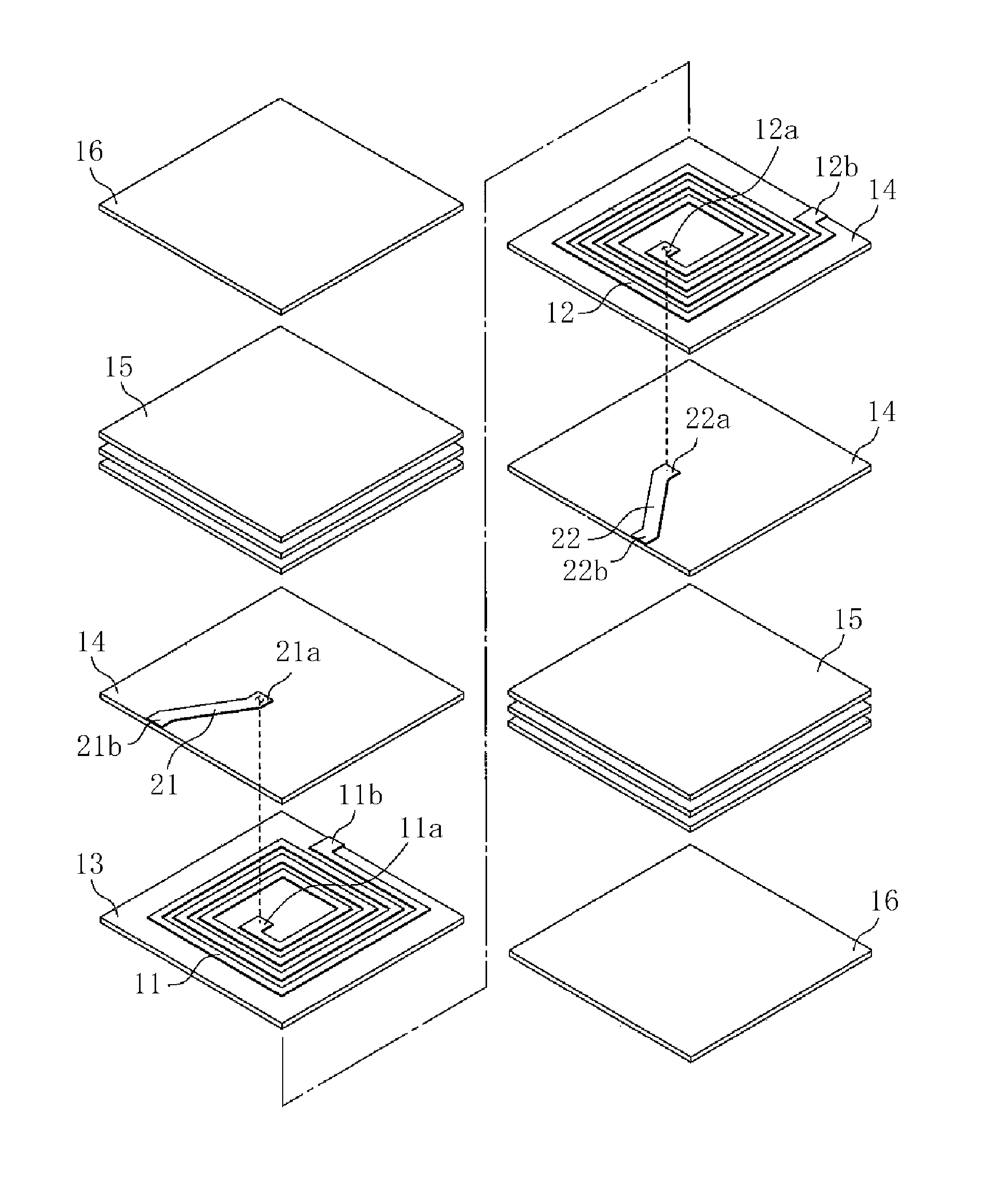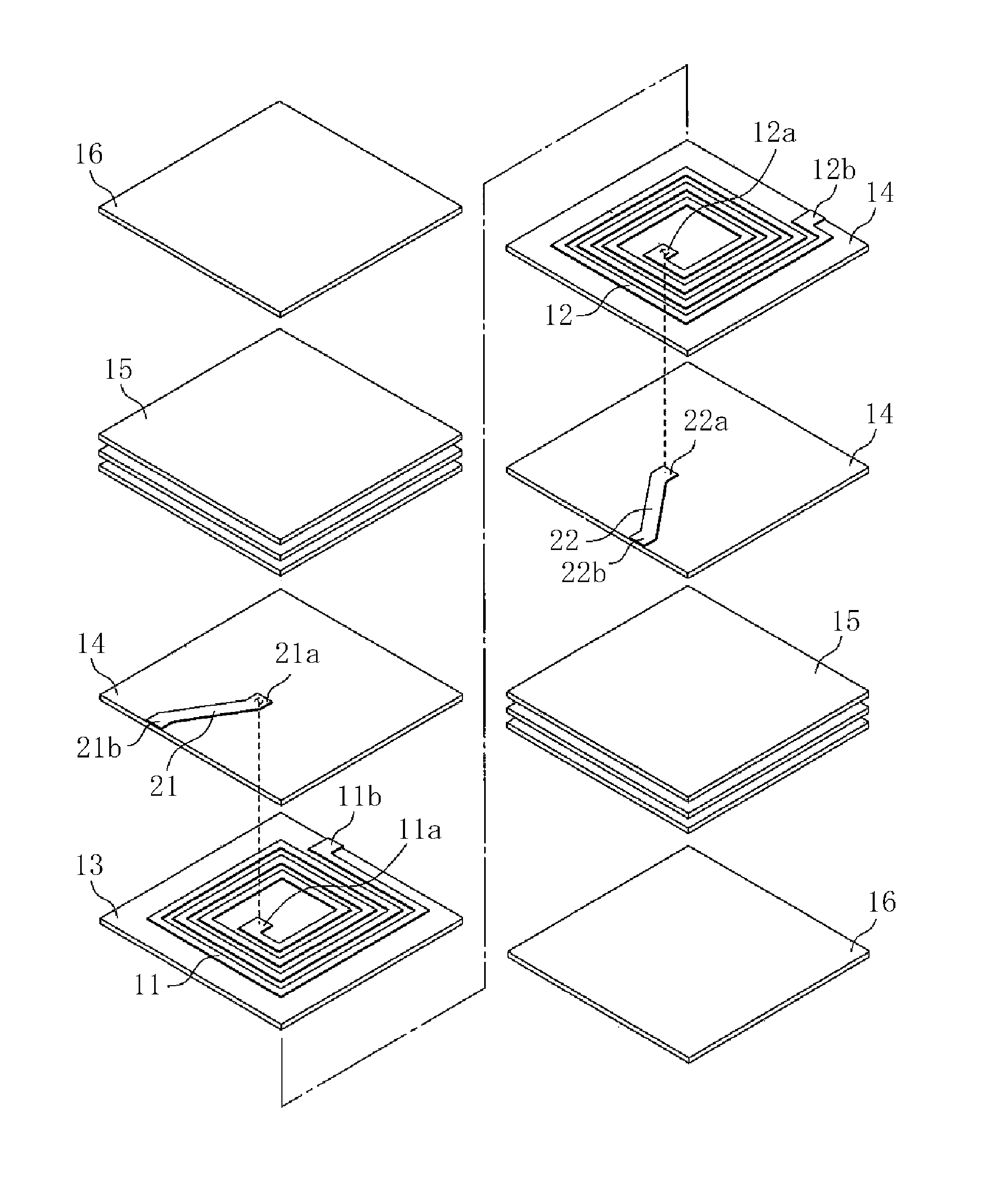Common mode choke coil
a choke coil and common mode technology, applied in the direction of transformer/inductance details, basic electric elements, inductances, etc., can solve the problem of insulation reliability drop, and achieve the effect of greater reliability of such components and greater reliability against moisture load
- Summary
- Abstract
- Description
- Claims
- Application Information
AI Technical Summary
Benefits of technology
Problems solved by technology
Method used
Image
Examples
example
[0035]The present invention is explained more specifically below using an example. It should be noted, however, that the present invention is not at all limited to the embodiments described in this example.
[0036](Material for Glass Layer)
[0037]As the material for the glass layer, 80 percent by volume of glass frit, prepared by 75.4 percent by weight of SiO2, 18.1 percent by weight of B2O3, 1.8 percent by weight of K2O, 2.6 percent by weight of Al2O3, and 2.0 percent by weight of MgO in equivalent oxides, and 20 percent by volume of quartz, were used. The ingredients were crushed to 1.5 μm (value of d50) in a bead mill. ZrO2 balls, Al2O3 balls, etc., can be used as a crushing medium, and ZrO2 balls were used in this example. Dispersant was added as necessary. Ethanol, toluene, methyl ethyl ketone, etc., can be used as a dispersion medium, for example, and ethanol was used in this example. Note that in each example / comparative example, the amount and size of material MgO were changed ...
PUM
| Property | Measurement | Unit |
|---|---|---|
| size | aaaaa | aaaaa |
| size | aaaaa | aaaaa |
| size | aaaaa | aaaaa |
Abstract
Description
Claims
Application Information
 Login to View More
Login to View More - R&D
- Intellectual Property
- Life Sciences
- Materials
- Tech Scout
- Unparalleled Data Quality
- Higher Quality Content
- 60% Fewer Hallucinations
Browse by: Latest US Patents, China's latest patents, Technical Efficacy Thesaurus, Application Domain, Technology Topic, Popular Technical Reports.
© 2025 PatSnap. All rights reserved.Legal|Privacy policy|Modern Slavery Act Transparency Statement|Sitemap|About US| Contact US: help@patsnap.com


